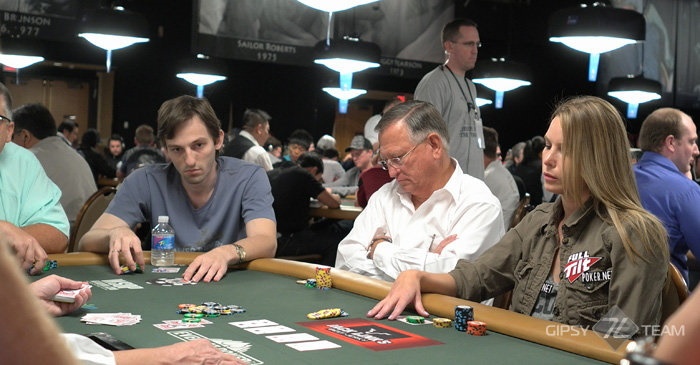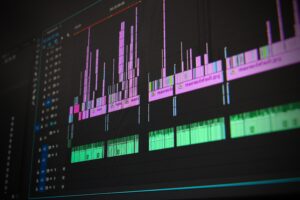The following article is a guest post by Aiden Rayner, the founder of Don’t Move Until You See it – a chess training platform that focuses exclusively on visualization, offering more than 400 visualization exercises (using the method outlined in this article).
When Aiden reached out to me and asked me for an opportunity for a guest post, I was a little bit skeptical. As some of you might recall from my review of the Chess Experience Podcast, I am always a little bit careful in regard to the new products on the chess landscape – especially when they are accompanied by typical promising marketing slogans.
However, through my subsequent email exchange with Aiden, I very much got an impression of a very authentic person who is genuinely passionate about chess, learning and helping others improve. Rarely have I met someone who was so receptive to my initial – not very pleasant – email and with whom I have had such an open, honest and pleasant conversation about chess, chess improvement and other aspects of life.
I also realized there might be quite some value in his approach to chess learning focusing heavily on chess visualization. Even though it is not a skill that is typically emphasized when chess improvement is discussed, it can’t be denied that all strong chess players develop it to extreme heights.
I did enroll in his Don’t Move Training Program and have solved a few exercises and have to say that it is at the same time challenging 1, yet very rewarding. Even though I still think there are “many paths that lead to Rome” and that the best improvement method is – having fun and enjoying the process, I do think that many people might find a lot of value in the method and the exercises Aiden offers.
Now, without further ado – I give it to Aiden!
Chess Visualization: The Master Skill
If there is one skill in chess that could be regarded as the game’s “Master Skill”, it would probably be the chess visualization. Without strong visualization skills, we limit our ability to make good decisions, avoid blunders, and seize the opportunities presented to us. To play our best, we need to take this key skill seriously.
Yet, even though it influences every aspect of our game, its importance is often overlooked and misunderstood. There aren’t many resources out there that allow you to train it specifically – and many chess players don’t even try to do it.
And while it is true that visualization indirectly gets improved via other forms of chess training, I believe that focusing on it can be even more effective.
So, what is it about visualization that makes it so important? And what should we do to train it?
We’ll get to that.
But first – let’s take a small detour through another favorite game of mine: Poker.
Games of Hidden Information
What is it about Poker that captivates so many Chess players?
Grischuk, Vallejo Pons, and Jan Gustafsson were each serious poker players at some point. Magnus and Hikaru both spend quite a bit of time on it too.

One of the best chess players of the last two decades – GM Alexander Grischuk – enjoying himself at the poker table (Image source: https://twitter.com/chess24com/status/1340324208681885696)
I also find myself drawn to the classic card game. I love the tension of it, the mathematics mixing with the bold bluffs and deduction. I often reflect on the two games, Chess and Poker. They always seemed linked in some way.
The link, after a great deal of pondering, came to me one night: Chess and Poker are BOTH about dealing with hidden information.
Poker’s clearly a game of hidden information. We can’t see what our opponents are holding or what’s still in the deck. We have to use the information we have to try and make the best decisions we can. The more information we have, the better the decision we can make.
Chess seems like a game with no hidden information. All the pieces are in front of us. There are no dice rolls. No one’s going to pull an ace on us.
But in reality, it’s full of hidden information. Fog rests over the board, stopping us from seeing it clearly, calculating into the future, and making decisions we can trust. Our success or failure depends on how well we deal with it all.
The Fog of Chess
Psychological studies have shown that the human brain can only hold between 5 and 9 pieces of information in short-term memory at once. (Most people get 7.) If we try to push beyond that limit, things get fuzzy.
Therein lies a problem: We can hold 7 things in our heads; there are 32 pieces on a Chessboard. One of those numbers is bigger than the other.
We experience mental fog when we start to hit that limit. For beginner players, that happens fast. Beginners hang their Queen in one move. Or miss simple mate-in-1 threats. Even when they’re looking right at the board, their limit of short-term memory is strained.
For more advanced players, the fog is often further back, the brain more adept at dealing with Chess information. But still, they feel its presence.
The fog, like face-down cards in poker, represents information that we don’t have access to.

Image source: Pexels
But unlike in poker, there’s a way we can get access to the hidden information in Chess.
Piercing through the Fog
We must train our brains to make better use of those 7 slots of short-term memory. If we’re going to have any hope of holding all that information in our heads, to see a board with clarity, explore variations deep into the future, we need to train our visualization skills.
Two-time world championship challenger Fabiano Caruana calls visualization “probably the most important skill in Chess.” He says that visualization errors are the bare essence of all mistakes and blunders.
That’s a lot of importance he’s giving to a skill that is largely ignored.
There isn’t much mainstream discussion on how to train visualization. Most experts believe that your visualization skills will improve passively as you do.
If Fabiano Caruana calls this the most important thing in Chess, why are we leaving this up to chance?
When we decide to train visualization actively, the impacts on the rest of our game are astounding.
Most of us are victims of this mental fog. It blocks us from accessing the information we need to make good decisions quickly. It causes us to make mistakes.
Training visualization is actually very simple. I’ll show you how. But first I need to explain something.
Identify, Isolate, Intensify
I love learning new skills. I love that moment when I realize I’ve learned something new. When it’s “clicked”. Over the years I created my own learning methodology. It’s strange, and gets me a lot of funny looks from the experts, but it’s never failed to yield me good results.
There’s one particular principle that literally changed the game for me with Chess. You’ll want to write this down somewhere.
Identify, Isolate, Intensify
For our purposes, this means we need to:
- identify the skill we’re trying to learn (in this case, visualization)
- isolate visualization from the rest of Chess so we can focus on it
- train visualization at an intensity higher than we would ever need in an actual game.
When we do this successfully, we rapidly improve our skills in the target area.
We’re going to achieve each of these goals using Chess audio. Recorded audio of games read aloud. It sounds simple, but you will feel the difference when you’ve done it.
Audio games isolate the skill of visualization. We don’t need to make any of the decisions that we would need to do in blindfold Chess. We don’t need to try and calculate a variation. All we are trying to do is build the raw visualization abilities required to track an entire game with no visual reference. It’s about visualization and nothing else.
Audio games also intensify visualization beyond what’s required in a regular game of Chess. After trying to keep track of a full game of Chess with no visual reference, your brain will feel stretched, perhaps a little overwhelmed. But when you return to a regular Chess game, you will have access to visualization powers you have not had before. After trying to keep an entire board and 32 pieces in your head for 12 moves, your brain will feel relieved that it only needs to remember that the knight, queen, and a couple pawns have moved.
Audio is the secret to the rapid improvement of chess visualization.

Image source: Pexels
How to Train Your Chess Visualization
For simplicity, I’ll break this section into two.
How to Record Your Chess Audio:
(In case you aren’t in a position to record anything right now, I’ve prepared an audio game for you to use here.)
- Prepare an audio recording device of some kind (I started with the Voice Memos app on my iPhone)
- Go to chessgames.com and find a game that lasts up to 15 moves (or longer if you’re more advanced). Here’s a filtered search I’ve prepared. Pick one of those games, but don’t spend much time looking at the game before the next step.
- Record yourself reading the moves out loud one by one. Leave 1-3 seconds of silence between each move. The silences between moves will give your brain a chance to picture everything. Err on the side of longer silences than you might need. It’s better to have extra time between moves than to feel rushed in your training.
Note: be sure to include turn numbers and the extra details (like checks and promotions).
How to Train with Your Chess Audio:
When you have your Chess audio file recorded and ready to go (or you’re using my example one), it’s time to get to work! Set aside at least 10 minutes for this exercise.
We’re going to listen through the audio file, attempting to follow each move on our mental board as we hear it.
With each move made, we need to be able to answer the following questions:
- What did the last move do?
- Did the last move attack or defend anything?
- Did the last move open up any sightlines for other pieces?
- What are the threats in the position?
Make sure to take your time and work to see each position with total clarity in your mind. When you lose track of the position (and you probably will, there’s no shame in that), start the recording again from the beginning. Each time you repeat it, you’re creating a clearer picture and improving your skills.
Repeat this over and over until you either reach the end or at least 10 minutes have gone by.
Remember, this is hard. It’s meant to be hard. We’re isolating and intensifying the skill of visualization. This challenge is what will give you rapid results!
It’s not success that matters here, but effort. It’s not your goal to complete the exercise. Your goal is to keep trying to complete the exercise! Do you see the difference?
I’ll let you in on a secret. I failed a lot when I first did this. Like the optimist I am, I recorded a 25-move game for my first attempt. It seemed like a hard-but-doable number at the time for some reason. I lost track of the position before the end of move 2. But then I tried again, and managed to reach move 3! Then 4. Then 5. Then 7!
It felt like a failure because I couldn’t get to 25. But without realizing it I had more than tripled the number of moves I could track in my head!
And I felt the impact in my Chess immediately. It doesn’t matter if you get to the end, only that you keep improving.
Better Information for Better Decisions
When we train visualization, we get access to more information. Higher quality information. And, like in Poker, the more information you have the more likely you are to make a good decision.
We can see more clearly, deeper into the position than our opponents. We still need to play the right moves, and we may still miss things. But like a WFM who uses my method said: “I still make mistakes, but much less than I used to.”
This method works fast, but it’s not a magic trick. You won’t immediately become a visualization master from your first go at these techniques. They’ll take regular practice to create lasting improvement.
My recommendation is to spend 10 minutes per day doing this, right before any games or study for the day. This kind of training primes your brain to handle any other chess work far more easily.
Sitting Opposite a Mirror
Poker is a game of making the most of the limited information you have. The only way to get more information is to cheat. Maybe you get someone with binoculars in a building across the road eyeing off other players’ hands. Or you sit opposite a mirror and see your opponent’s cards in the reflection.

Image source: Pexels
In both of these cases, you better hope your opponents don’t work out what you’re doing.
In chess, we get more information by developing raw skills. It’s legal, and it’s straightforward. The better we are at visualization, the more information we have, and the more we can trust our decisions.
If we have better information than our opponent, much like in Poker, we have a powerful advantage.
When we no longer allow the fog to defeat us, we have a much better chance of defeating our opponent.
Visualization is the Master Skill of Chess.
And it’s gone ignored for far too long.
P.S. To go deeper into any of these ideas and learn about Don’t Move Until You See It, you can get my free Master Skill Series of newsletters here.

